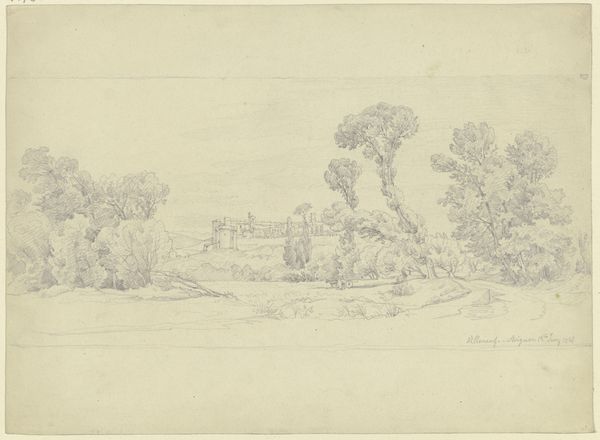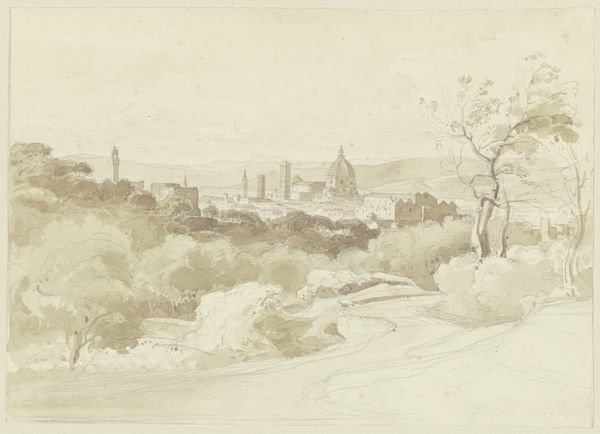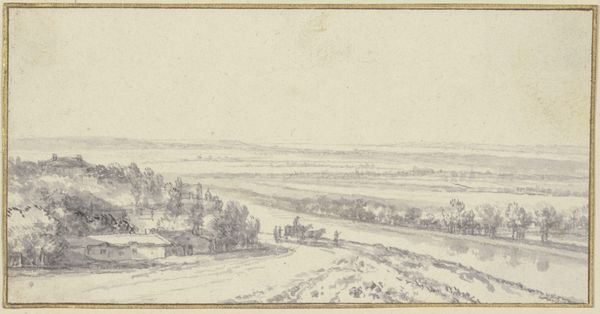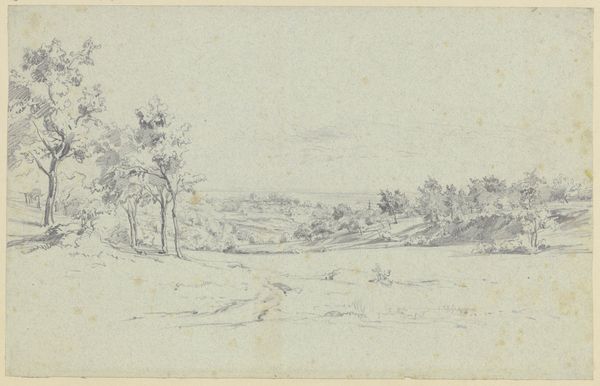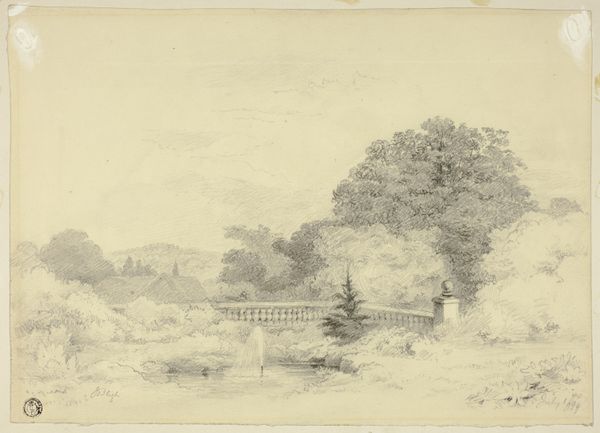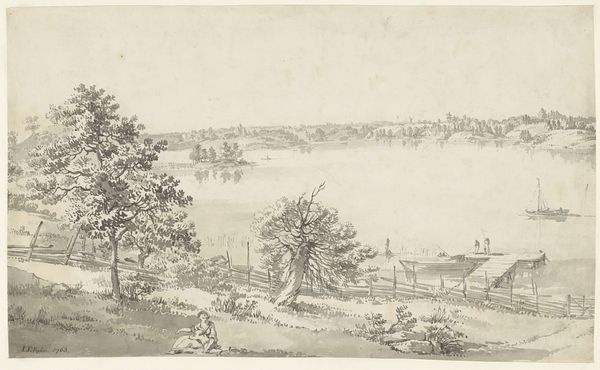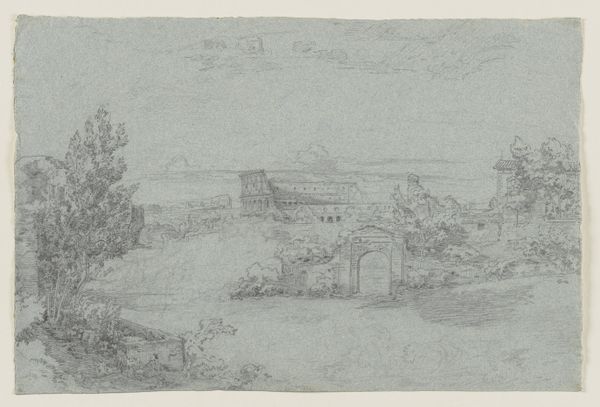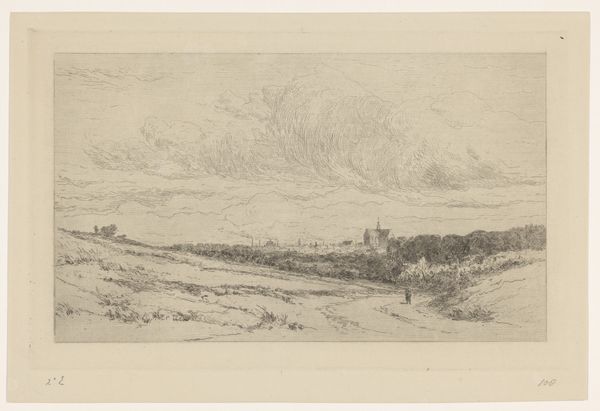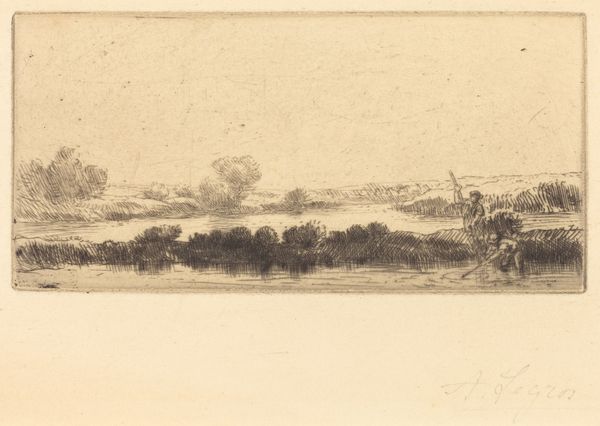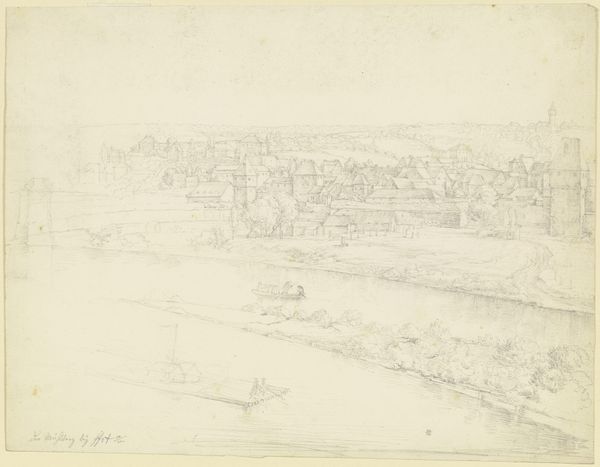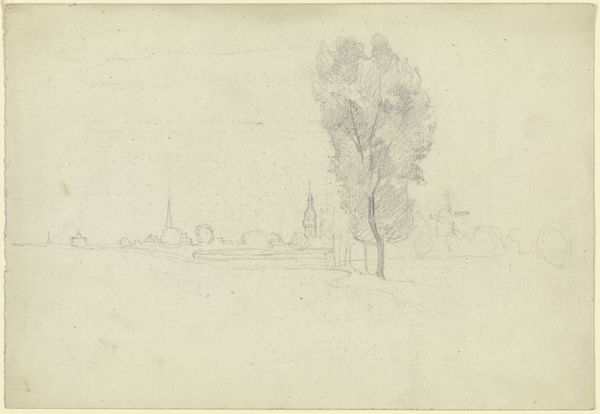
drawing, pencil, graphite
#
drawing
#
16_19th-century
#
landscape
#
etching
#
pencil
#
graphite
Copyright: Public Domain
Editor: This graphite and pencil drawing is entitled "Ansicht von Frankfurt am Main von Oberrad gesehen" by Friedrich Joseph Ehemant. It's quite a detailed landscape, and the architectural details in the distance intrigue me. How do you interpret this kind of cityscape rendering within a natural landscape? Curator: That’s a key question. How did Frankfurt perceive and present itself at the time? Ehemant’s choice to depict the city from afar, nestled within the landscape, reflects a 19th-century tendency to negotiate between burgeoning industrial growth and a longing for pre-industrial harmony. Do you notice anything about the relationship between the city and the natural elements in the drawing? Editor: It's subtle, but the trees seem to frame the city, almost protecting it, or perhaps containing it. It's like a picturesque vignette. Curator: Precisely. These vedute, or view paintings, gained popularity as cities grew, and so did their marketing budgets and civic boosterism. The drawing might be viewed as subtly advocating for the city’s integration with its environment, presenting a vision of progress that doesn't overwhelm nature. Consider how this imagery might have been used to attract investment or tourism. Editor: So, it's not just a landscape, but a kind of promotional tool? A carefully constructed image to influence how Frankfurt was perceived? Curator: Exactly! The seeming innocence of the landscape is, in reality, a carefully crafted statement about Frankfurt's identity and its aspirations. And remember, art is rarely produced in a vacuum. Editor: I never considered how landscapes could participate in city marketing. Thanks for helping me see beyond the surface! Curator: My pleasure. Considering the context behind artistic creation can reveal much more than initially meets the eye.
Comments
No comments
Be the first to comment and join the conversation on the ultimate creative platform.
